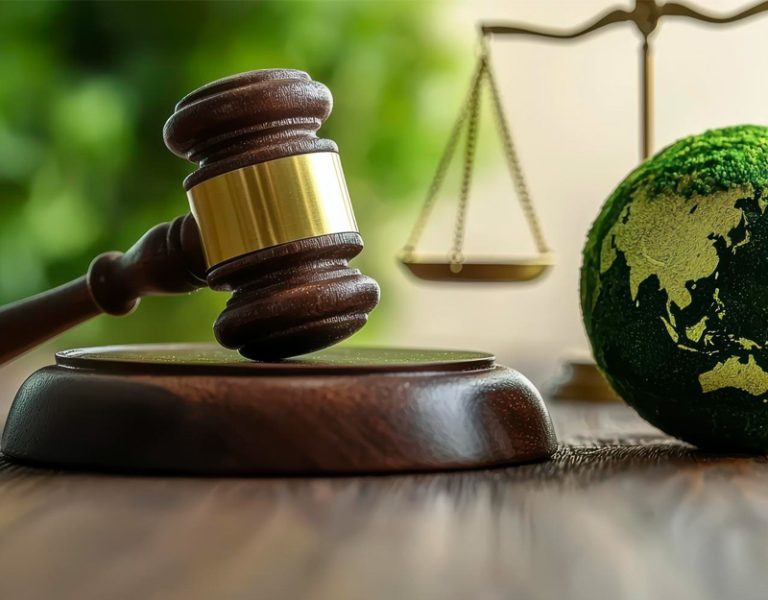In Saudi Arabia, patents are a crucial legal mechanism for safeguarding innovations and inventions. They grant inventors exclusive rights to commercially exploit their creations for a specified period, serving as a fundamental driver for industrial development and local innovation.
Yet, many applicants face legal challenges that could cause their patent applications to fail, often without realizing it. This article explores the most common legal mistakes, outlines the conditions for obtaining a patent, explains where to register, the duration of protection, and the core elements of patent protection. It also highlights the role of the Sada Law in helping inventors protect their intellectual property rights.
What Is a Patent?
A patent is an official legal document that grants the inventor exclusive rights to benefit from their invention for a specified period, as regulated by the Saudi Intellectual Property Protection Law. Holding a patent gives the inventor the legal authority to prevent others from manufacturing, using, or selling the invention without permission.
What Is an Invention?
An invention is any novel creation that provides a technical solution to a specific problem and is capable of industrial application. Understanding the eligibility requirements for a patent is essential to ensure your application meets official approval standards.
Conditions for Granting a Patent
To secure a patent in Saudi Arabia, an inventor must comply with several fundamental requirements. These ensure the invention’s originality, practical application, and compliance with applicable laws and regulations.
- Novelty (Newness)
The invention must be entirely new and must not have been disclosed or publicly used anywhere in the world before the application date. This safeguards originality and ensures the invention has not been previously exploited. - Inventive Step
The invention must contain a creative step that is not obvious to someone skilled in the relevant field. It should represent a clear technical advancement and add measurable value in its area. - Industrial Applicability
The invention must be suitable for use or manufacture in any type of industry. This ensures the idea can move from theory to practical, real-world benefit. - Compliance with Laws and Public Morals
The invention must not violate Islamic Sharia, Saudi laws, or public morals. This ensures lawful and ethical use of the patent.
Where to Register a Patent in Saudi Arabia
Patents are registered through the Saudi Authority for Intellectual Property (SAIP), the official body responsible for receiving and reviewing patent applications. Registration can be completed entirely online via SAIP’s platform, making the process faster and more convenient.
- Creating an account on the SAIP online portal.
- Completing the patent application form and attaching all required documents, such as a detailed description and technical drawings.
- Paying the prescribed fees.
- Tracking the application through technical and legal examination until the patent certificate is issued.
Consult with an intellectual property lawyer to ensure the application is correctly prepared and to avoid mistakes that could lead to rejection.
Duration of Patent Protection
In Saudi Arabia, patents typically protect for 20 years from the date of filing.
Renewal or rights after expiration
Once the protection period ends, the invention enters the public domain, meaning it can be freely used by others without the inventor’s permission. At this stage, the Sada Law Firm can assist in protecting related intellectual property or filing new, related patents.
Elements of Patent Protection
After understanding the registration process, eligibility requirements, and application steps, the next question is, What exactly does a patent protect?
What Are the Elements of Patent Protection?
The elements of protection are the backbone of any patent. They define what you, as the inventor, are legally entitled to protect. In Saudi law, there are clear standards for drafting these elements to ensure they are valid and enforceable.
Key elements include:
- Clarity and precision in claims: Claims must be written clearly and precisely to define the invention without ambiguity.
- Alignment of claims with the detailed description: Protection elements must match the invention’s description and drawings.
- Highlighting the inventive step: Claims must demonstrate what makes the invention substantially different from existing solutions.
- Balanced legal drafting: Claims that are too broad may risk rejection, while overly narrow claims may limit the scope of protection.
Variety of Patent Protection Elements in the Saudi System
The Saudi patent framework differentiates between the technical type of the invention and the required protection elements. These include:
- Product invention or industrial process: This may relate to material components, a chemical composition, or specific production steps.
- Technical data that provides a competitive edge: Such data makes the patent a powerful tool for securing both technical and commercial advantages.
Why these elements matter:
- They grant exclusive legal rights to use or manufacture the invention.
- They strengthen licensing or sale negotiations.
- They reduce the risk of disputes over interpretation or scope.
Sada Law Firm provides specialized consulting to ensure every protection element is strategically crafted to safeguard the inventor’s interests.
Common Legal Mistakes That Can Fail a Patent Application in Saudi Arabia
After covering the core elements of patent protection, such as clarity of claims, alignment with the description, the inventive step, and industrial applicability, it’s essential to note that any flaw in applying these elements or following the required procedures can lead to outright rejection of the application.
In Saudi Arabia, several recurring legal mistakes act like “landmines” that can undermine an inventor’s efforts, no matter how strong the idea is.
Key Legal Mistakes That Can Cause a Patent Application to Fail in Saudi Arabia
- Failure to meet the basic protection requirements
If the invention lacks novelty, does not introduce a clear inventive step, or is not industrially applicable, it will be rejected outright, even if it appears interesting from a personal perspective. - Premature disclosure of the invention
Presenting the idea at an exhibition, publishing it online, or even discussing it publicly within 12 months before filing can void the novelty requirement and give competitors the opportunity to exploit it. - Weak or vague application drafting
The legal and technical language in a patent application must be extremely precise. An incomplete or unclear description, or ambiguous claims, can lead to rejection or significantly limit the scope of protection later. - Neglecting prior art searches
Failing to conduct a prior art search may result in filing for an invention that already exists or is highly similar to an existing one, which often leads to rejection during substantive examination. - Delays in responding or providing required documents
Patent applications in Saudi Arabia are tied to strict deadlines. Delaying a response to the examiner’s comments or failing to submit required documents (such as a power of attorney or a priority certificate) may result in the application being permanently dismissed. - Ignoring legal consultation
Drafting a patent application without the assistance of a qualified expert is like performing surgery without a doctor. A patent attorney or specialist ensures the application meets all legal and technical standards, preventing loopholes that competitors could later exploit.
Why are these mistakes fatal?
A patent is not just a written idea, it is a legal and technical file subject to strict review. Any error in drafting, timing, or meeting requirements can undermine the patent’s legal foundation.
Recommendations from Sada Law Firm to Avoid These Mistakes
- Conduct prior art searches before filing.
- Keep your invention confidential and use NDAs before sharing.
- Work with a qualified attorney to draft clear and precise claims.
- Include complete technical drawings and specifications.
- Adhere to all official deadlines.
- Use international protection options when targeting markets outside Saudi Arabia.
How Sada Law Firm Protects Your Innovations and Secures Your Patent
- Understanding the invention before drafting the application.
- Writing strong claims to prevent exploitation or circumvention.
- Ensuring full compliance with SAIP requirements.
- Managing the filing process step-by-step until the patent is issued.
- Providing specialized legal advice to strengthen protection.
- Defending the patent in disputes to ensure rights are upheld.
Conclusion
Securing a patent in Saudi Arabia is more than an administrative task, it is a legal and technical journey that demands precision. Any oversight can leave your invention vulnerable, even if it is unique and valuable.
Sada Law Firm supports inventors through every step, from assessment to enforcement. With deep expertise in Saudi and international IP law, Sada ensures your patent claims are strong, your rights are secure, and mistakes are avoided.
If you have an innovation and want to protect it with confidence, contact us and let our intellectual property experts secure a strong, marketable patent for you.
FAQs
1. What are the requirements for obtaining a patent in Saudi Arabia?
Several essential conditions must be met:
- The invention must be new and not previously disclosed.
- It must include a non-obvious inventive step for experts in the field.
- It must be industrially or practically applicable.
- It must not conflict with Islamic law or public order.
2. What are some examples of patents in Saudi Arabia?
Here are some notable examples:
- Innovations in desalination technology.
- New techniques for oil and gas extraction.
- Innovative medical devices for improved diagnosis and treatment.
- Smart solutions for renewable energy.
3. What is the Patent Law?
Through the Saudi Intellectual Property system, the law regulates the procedures for granting patents, the inventor’s rights, and the protection period, which is typically up to 20 years, in addition to mechanisms for filing objections and defending rights.
4. What are the characteristics of a patent?
Key characteristics include:
- Grants the inventor exclusive rights to exploit their invention.
- Limited to a specific term (usually 20 years).
- Can be transferred or licensed to others.
- Provides legal protection against unauthorized copying or exploitation.
5. Examples of patents
Examples vary by field, such as:
- High-efficiency electric motors.
- Software for big data processing.
- Innovative agricultural tools and technologies.
6. How much is the patent reward?
In Saudi Arabia, inventors may receive financial rewards or returns by selling or licensing the patent rights. The amount depends on the market success of the invention and the level of demand for it.
7. What is the role of the patent system?
This system regulates all aspects of inventions, from registration requirements and filing procedures to mechanisms for protecting rights and resolving disputes.
8. What is the role of the Executive Regulations for the Patent System?
Its role includes:
- Clarifying application procedures.
- Specifying the required documents.
- Setting deadlines for responding to office actions.
- Regulating objection and appeal procedures.
9. I have an invention idea, how do I execute it?
Of course, you can start by:
- Documenting your idea along with sketches or prototypes.
- Ensuring its novelty and confirming that no similar patent exists.
- Consulting with specialized advisors or firms to draft the patent application.
- Applying to the Saudi Authority for Intellectual Property.
- Seeking partners or investors to develop the idea.






